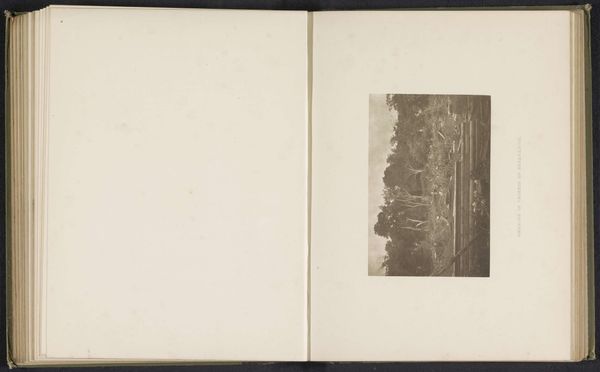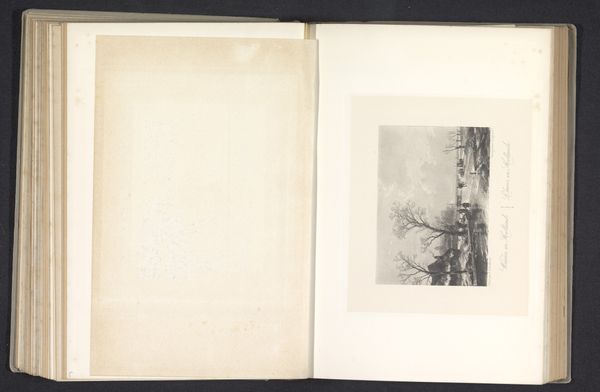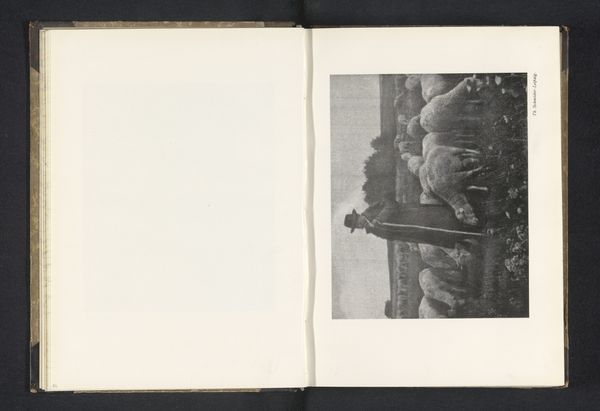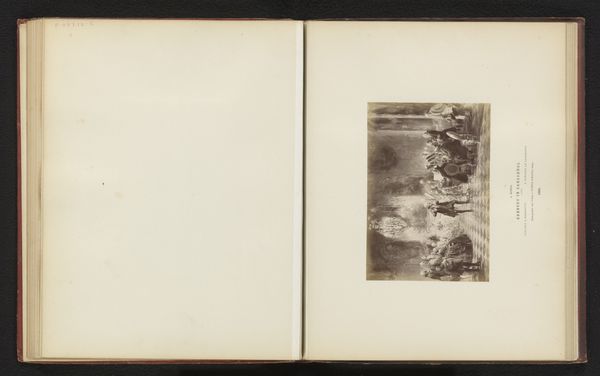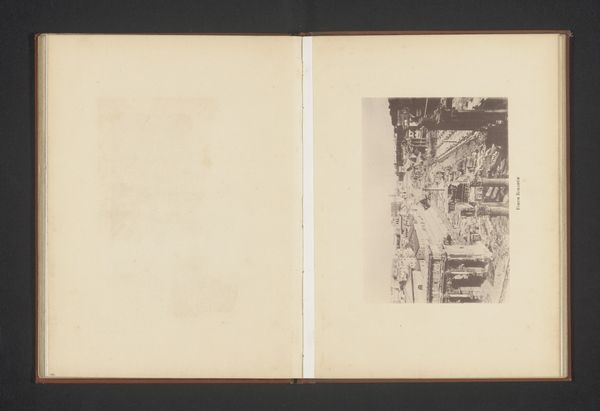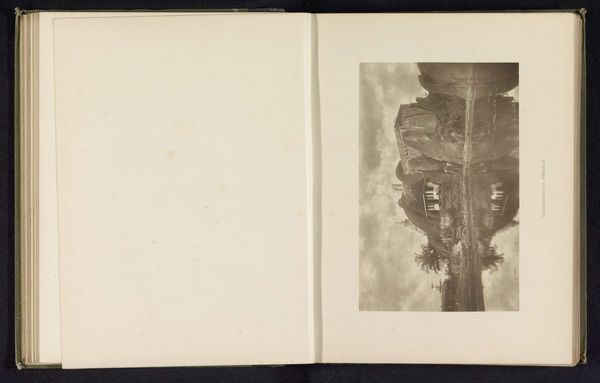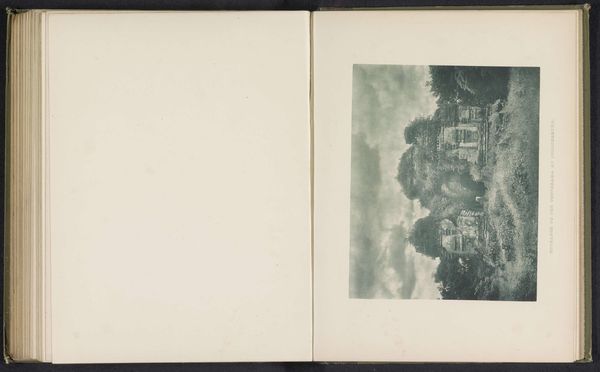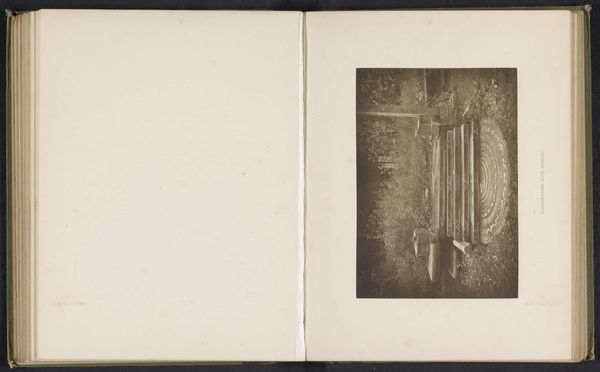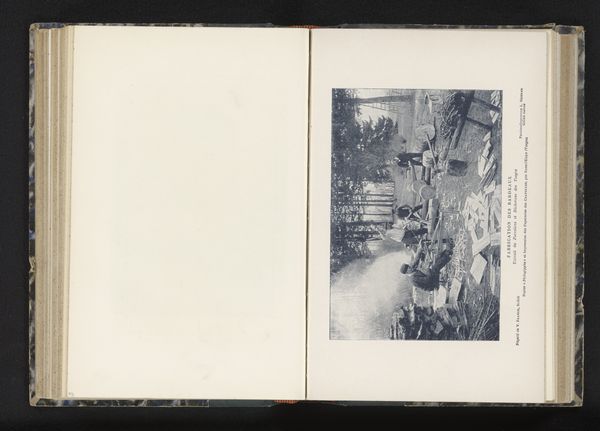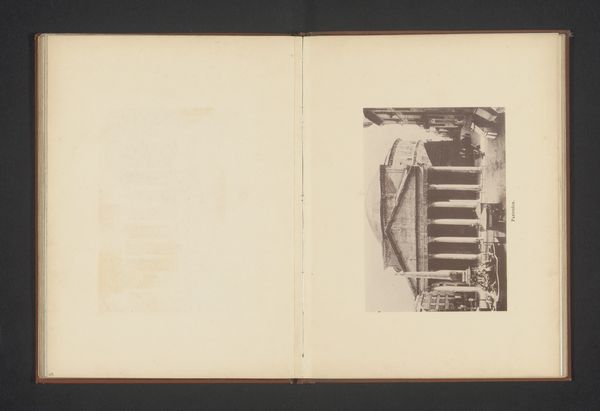
print, photography, albumen-print
# print
#
asian-art
#
landscape
#
photography
#
cityscape
#
albumen-print
Dimensions: height 102 mm, width 145 mm
Copyright: Rijks Museum: Open Domain
Curator: Here we have Henry William Cave's photograph, "Ruanweli dagaba," captured in 1896 as an albumen print. What catches your eye? Editor: It looks worn, weathered, yet somehow serene. The monochromatic palette gives it an aged feel, almost as if time itself has softened its edges. What about you? Curator: Immediately, I am drawn to the dagaba, also known as a stupa, its shape a visual echo of ancient cosmic mountains, central in Buddhist cosmology, a world axis even. The dagaba represents not just a place, but an entire world of belief. Editor: It’s intriguing to consider the chemical processes involved in creating this albumen print, how the light interacts with the treated paper to fix this specific image in time. It highlights photography as both a form of art and a technical achievement rooted in material processes. The landscape becomes a subject molded by human interaction and chemical reactions. Curator: Consider too, the cultural weight imbued in the image itself. Cave's lens freezes a moment, yes, but it's a moment laden with layers of Buddhist iconography—a potent visual symbol, a center of spiritual practice rendered via this relatively new medium. What sort of commerce surrounded these prints? Editor: Definitely! And let's not forget the act of its production: The gathering of raw materials, the labor involved in preparing the albumen paper, the darkroom alchemy. It invites us to consider who had access to this image, the economy surrounding it, and how that impacted its reception. Were they being sold, and to whom? The cost of an albumen print could vary quite drastically then, based on size, image intricacy and who made it, informing ideas about colonial era commerce in Ceylon, now Sri Lanka. Curator: Indeed, seeing the "Ruanweli dagaba" this way encourages us to see how images not only reflect but actively participate in shaping our understanding of cultural memory. Thank you for offering insight on its materiality. Editor: My pleasure. I’ll consider now how a deeper look into materials gives us an opportunity to reframe our own views of both historical representation, cultural appreciation and how photography affects both.
Comments
No comments
Be the first to comment and join the conversation on the ultimate creative platform.
